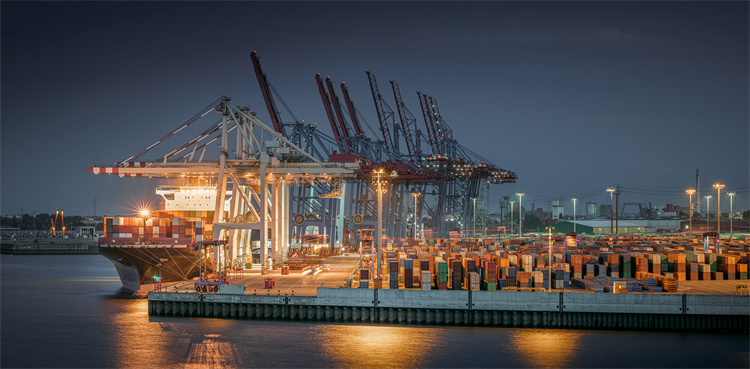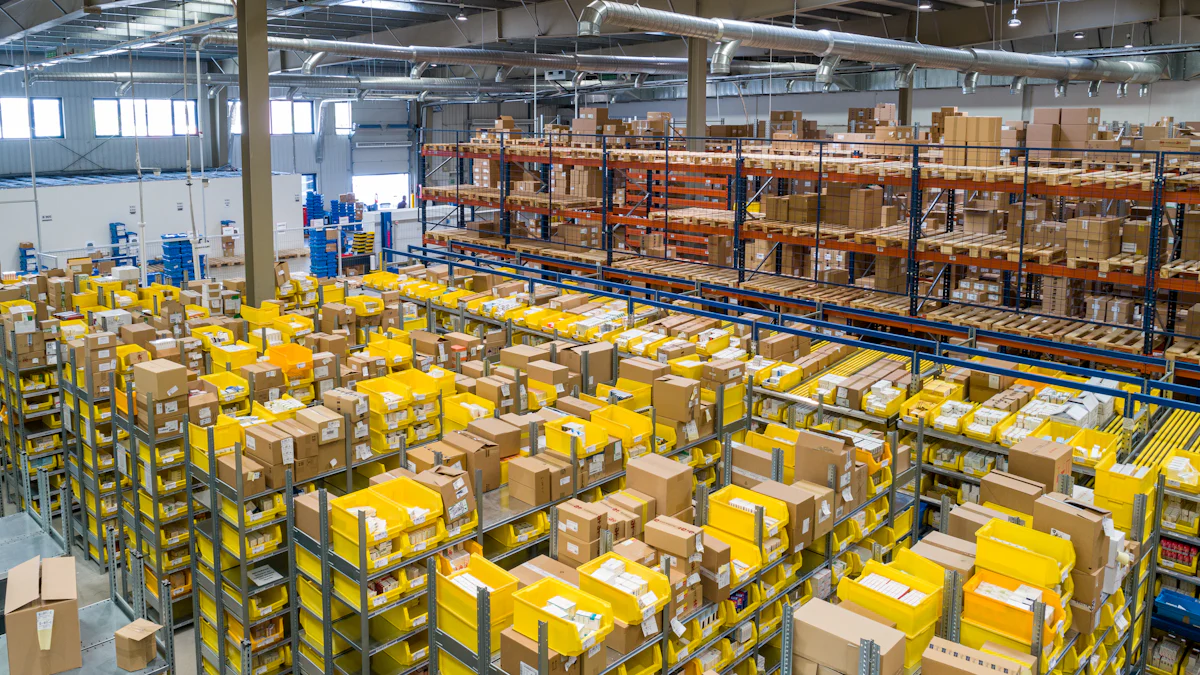Integrated Logistics Solutions: Which Model Fits Your Business?

Integrated logistics revolutionizes traditional supply chain management by harmonizing all operational facets into a seamless, synchronized system. Selecting the right model is paramount for businesses aiming to enhance efficiency and customer satisfaction. In this blog, we will delve into three key models: Centralized Logistics, Decentralized Logistics, and Hybrid Logistics, each offering distinct advantages tailored to different business needs.
Understanding Integrated Logistics

When it comes to integrated logistics, businesses must grasp the essence of aligning all operational aspects seamlessly. This approach involves integrating various departments, processes, and resources to function as a unified entity. The key components of integrated logistics encompass efficient order fulfillment, streamlined deliveries, and optimized distribution processes. By implementing these components effectively, businesses can achieve enhanced efficiency and customer satisfaction.
In the realm of business operations, the significance of integrated logistics cannot be overstated. It serves as a catalyst for driving efficiency across all facets of the supply chain. Through integrated logistics, businesses can streamline their processes, reduce operational redundancies, and enhance overall productivity. Moreover, by prioritizing customer satisfaction through timely deliveries and tailored solutions, companies can solidify their market presence and foster long-term relationships with clients.
Key Components
Seamless Integration: Harmonizing all departments and resources.
Efficient Order Fulfillment: Accelerating product delivery timelines.
Streamlined Deliveries: Optimizing distribution processes for swift shipments.
Benefits
Enhanced Efficiency: Streamlining operations for improved productivity.
Improved Customer Satisfaction: Meeting client needs promptly and effectively.
As highlighted by experts in the field of Supply Chain Management, building a workforce that can adapt to different ways of working is crucial for maintaining resilience in the supply chain amidst evolving digital trends. Collaboration plays a pivotal role in integrated logistics success by fostering synergistic relationships among suppliers, manufacturers, distributors, retailers, and customers. This collaborative effort aims to create an environment where each stakeholder contributes to and benefits from streamlined logistics operations.
Centralized Logistics
What is Centralized Logistics?
Centralized logistics involves consolidating all operational functions and processes into a single, unified system. This model enables companies to streamline their supply chain activities by centralizing key operations such as inventory management, order processing, and distribution. By centralizing these functions, businesses can achieve improved efficiency and greater visibility into their logistics operations.
Features
Resource Optimization: Centralized logistics often enable better resource allocation and utilization, leading to cost savings and improved operational efficiency.
Advanced Technology Integration: Companies leveraging centralized logistics benefit from advanced tracking and monitoring systems, providing better visibility into the supply chain.
Economies of Scale: Centralized logistics allow companies to benefit from economies of scale, bulk purchasing, and better negotiation power with suppliers.
Benefits
Cost Efficiency: By consolidating operations under a centralized model, businesses can reduce redundant processes and lower overall operating costs.
Enhanced Visibility: Centralized logistics provide real-time insights into inventory levels, shipment statuses, and overall supply chain performance.
Improved Coordination: With all functions managed centrally, companies experience smoother coordination between departments, leading to streamlined operations.
Suitability for Businesses
Centralized logistics is particularly well-suited for small to medium enterprises looking to optimize their supply chain operations efficiently. By adopting a centralized approach, these businesses can benefit from streamlined processes, reduced overhead costs, and enhanced control over their logistical activities.
Small to Medium Enterprises
Operational Streamlining: Small to medium enterprises can streamline their operations by centralizing key logistical functions such as warehousing and transportation management.
Cost Savings: Adopting a centralized logistics model allows smaller businesses to benefit from cost efficiencies associated with bulk purchasing and optimized resource allocation.
Cost Considerations
Economies of Scale: Through centralized logistics, small to medium enterprises can leverage economies of scale to negotiate better rates with suppliers and reduce procurement costs.
Reduced Overhead: By consolidating operations under one roof, businesses can minimize overhead expenses associated with managing multiple decentralized facilities.
Decentralized Logistics
What is Decentralized Logistics?
Decentralized logistics represent a strategic approach where key operational functions are dispersed across multiple locations, allowing for diverse decision-making processes and enhanced adaptability. This model involves establishing various offices in different regions to facilitate localized decision-making and cater to specific market demands efficiently.
Features
Diverse Decision-Making: Decentralized logistics empower regional offices to make decisions tailored to local market needs swiftly.
Enhanced Adaptability: By dispersing operational functions, companies can quickly adjust strategies based on regional requirements and market dynamics.
Benefits
Localized Expertise: Decentralized logistics enable businesses to tap into local expertise and insights, enhancing their understanding of diverse markets.
Cost Efficiency: Operating through multiple decentralized offices allows companies to reduce operating costs associated with centralized operations.
Market Responsiveness: With decentralized logistics, businesses can respond promptly to changing market trends and consumer preferences in specific regions.
Suitability for Businesses
Decentralized logistics are particularly advantageous for large enterprises with extensive geographical reach and diverse customer bases. These companies benefit from the flexibility offered by decentralized operations, allowing them to tailor strategies according to regional nuances and capitalize on local market opportunities effectively.
Large Enterprises
Geographical Reach: Large enterprises with a global presence can leverage decentralized logistics to establish a strong foothold in various markets worldwide.
Customer-Centric Approach: By decentralizing operations, large enterprises can adopt a customer-centric approach, addressing unique needs across different regions efficiently.
Flexibility Considerations
Adaptation Capability: Large enterprises utilizing decentralized logistics can swiftly adapt strategies based on regional variations, ensuring optimal performance in diverse markets.
Market Penetration: Through decentralized operations, companies can penetrate new markets seamlessly, leveraging local insights for successful expansion initiatives.
Hybrid Logistics

What is Hybrid Logistics?
Features
Efficient Utilization: Leveraging the best of both centralized and decentralized approaches.
Adaptive Strategies: Swiftly adjusting operations based on market demands.
Personalized Service: Tailoring logistics solutions to meet specific business needs.
Benefits
Enhanced Efficiency: Maximizing operational output through a blend of models.
Improved Adaptability: Responding promptly to changing market dynamics.
Customized Solutions: Offering tailored services for diverse business requirements.
Suitability for Businesses
Versatility
Catering to a wide range of business sizes and industries with adaptable solutions.
Enhancing operational flexibility by combining the strengths of different logistics models.
Scalability Considerations
Growth Potential: Allowing businesses to scale operations seamlessly as they expand.
Strategic Expansion: Facilitating strategic growth initiatives through flexible logistics solutions.
Centralizing logistics operations can lead to cost savings through economies of scale. Bulk purchasing, optimized transportation routes, and streamlined processes can reduce overall logistics expenses. Integrated logistics offers a multitude of benefits for businesses, primarily in reducing costs, enhancing efficiency, increasing supply chain visibility, boosting agility, and improving customer satisfaction. By integrating various logistics components like transportation and warehousing, businesses can streamline processes and eliminate waste, leading to significant cost savings. Embracing the right model is crucial for maximizing operational efficiency and staying ahead in today's competitive market landscape. Evaluate your logistics needs diligently to unlock the full potential of integrated logistics solutions.
See Also
Efficiently Maneuvering High-Tech Manufacturing Logistics for Success
Simplifying High-Tech Manufacturing Supply Chain Challenges
Artificial Intelligence Transforming Future Logistics
Uncovering High-Tech Manufacturing: JUSDA's Logistics Innovations
Innovative Cloud Solutions Transforming Supply Chain Operations
